NatureZen: Find That Moth (Again!)
words and photos by Melissa McMasters
I hope you’ve got your light-colored sheets and porch lights ready, because it’s time to celebrate National Moth Week! Mid-summer is the perfect time to appreciate the beauty and diversity of these mostly-nocturnal insects. Or, for those of you like me who live in an apartment and can’t attract them at night, you can go exploring and feel a sense of accomplishment when you find some well-camouflaged day-flying moths blending into their surroundings. A few years back, we spotlighted some of our favorite cryptic moths, and we’ve got a fresh batch for you to check out today.
Last time we saw a grape leaffolder moth that was primarily using its wing color to mask itself by lying flat against a dead leaf. In this case, the moth is hanging from a leaf instead, using its ragged wing edges to blend in texturally. This species has multiple strategies in its bag of camouflage tricks!
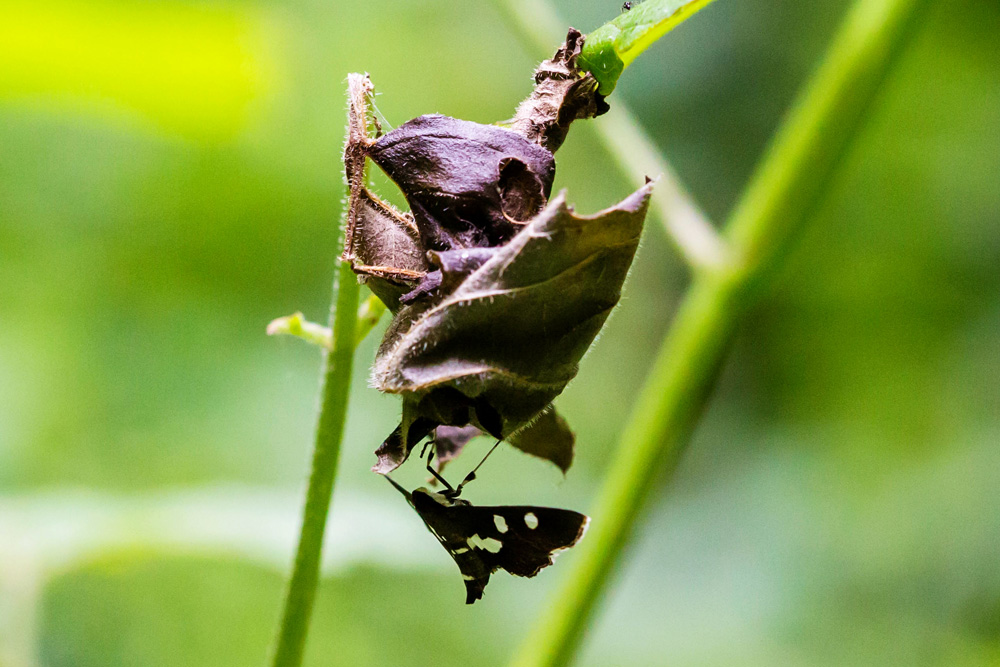
As with many of these moths, I probably would not have happened upon this leafroller had I not seen it flying. It somehow manages to blend in both to the rock and the lichen it’s perched on.
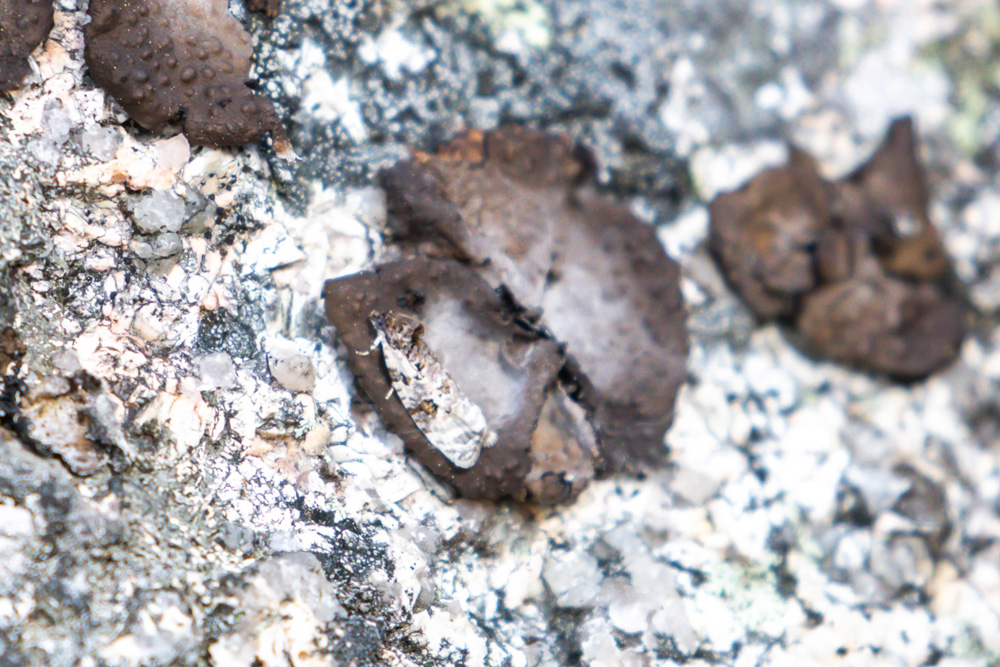
I haven’t figured out what kind of moth this is, but I love the way its wings mirror the delicate pinks and curled edges of these milkvetch leaves.
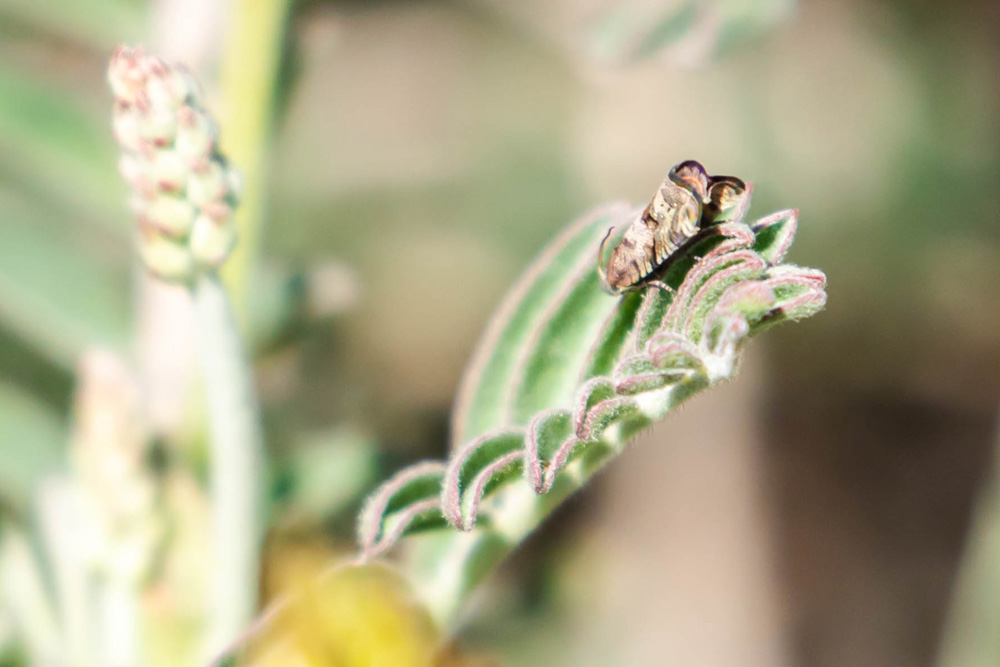
Walking through what’s left of the natural habitat in the Boca Chica area of Texas on a day SpaceX wasn’t blocking the road, my Texas Butterfly Festival group entered a scrubby desert area and was greeted by dozens of nondescript gray moths. I was delighted when one of them landed and blended completely into the background.
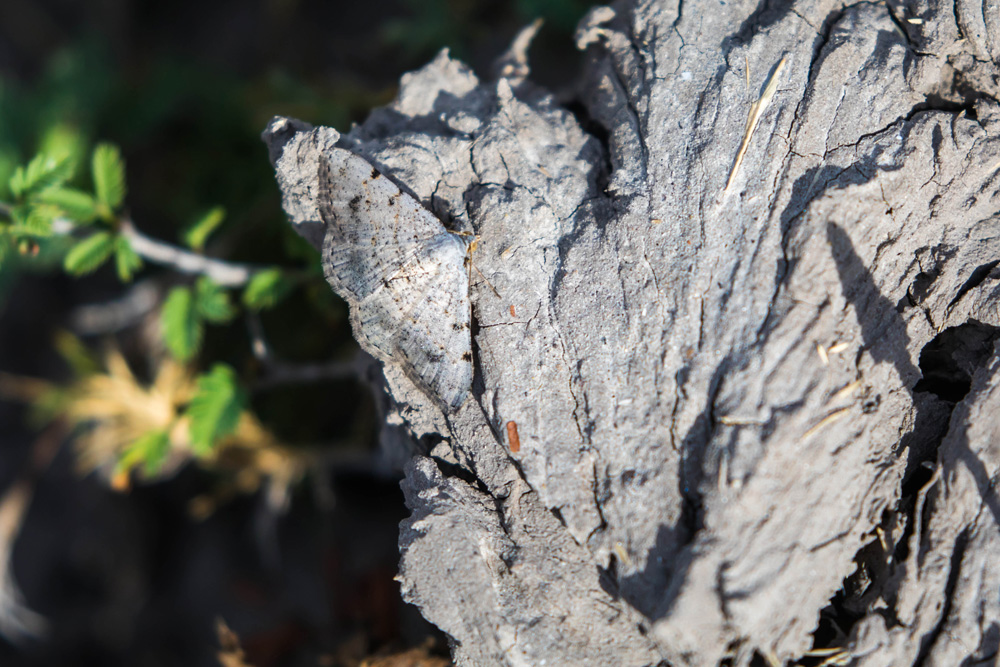
Litter moths spend a lot of time–you guessed it–hanging out in the leaf litter. They’re triangular in shape and have intricate wing markings that enable them to blend in with the leaves on which they’re perched. This one’s stripes line up beautifully with the veins on the leaf, at least on its right side!
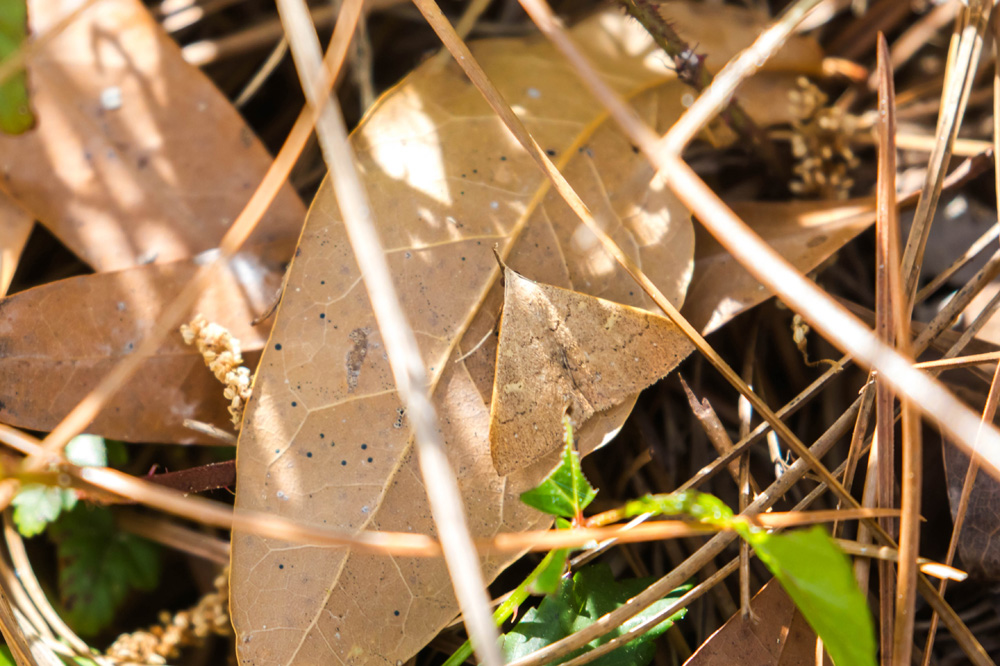
I’m not sure whether these are flower moths, fairy moths, or something equally cheerful, but I do know that initially I thought they were just part of the drying buds and flowers of this elephant’s-foot plant. Once I looked closer, they were everywhere!
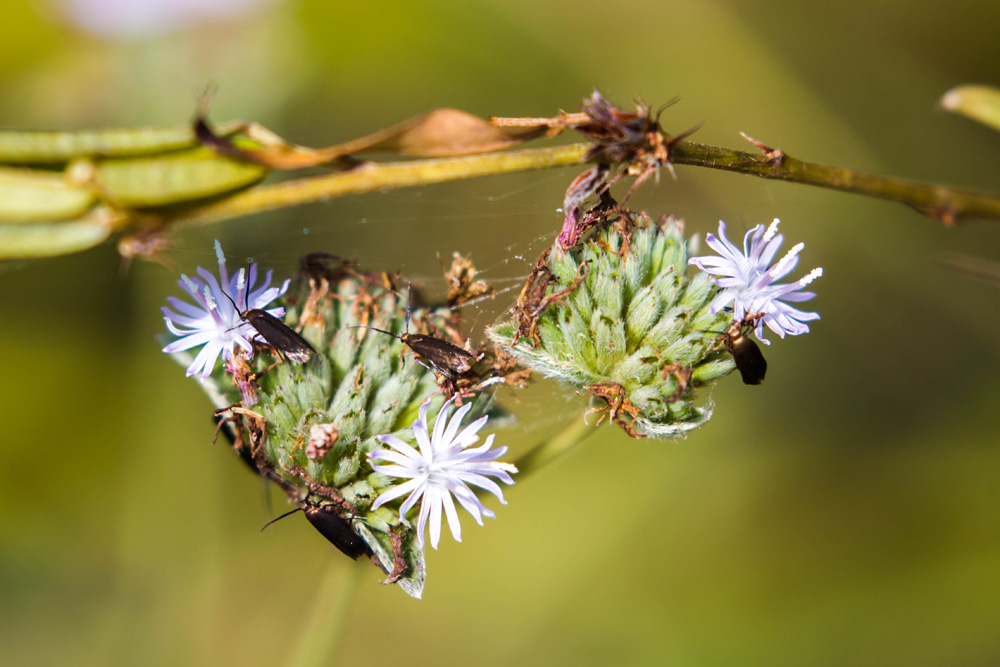
Sometimes moths mimic the actual blossoms of a flower. Crocus geometers are highly variable and can be anything from pale to rich buttery yellow, but they’re all alike in fooling me into thinking they’re a bloom fluttering on a stem.
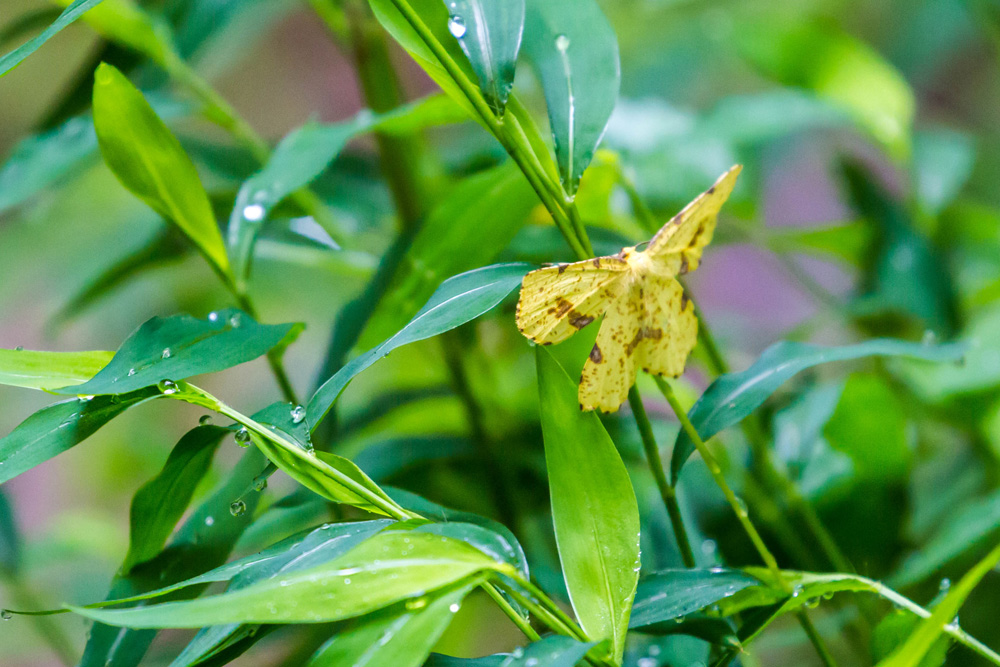
From a distance, this snout moth just looks like another chapter in the history of this tree trunk.
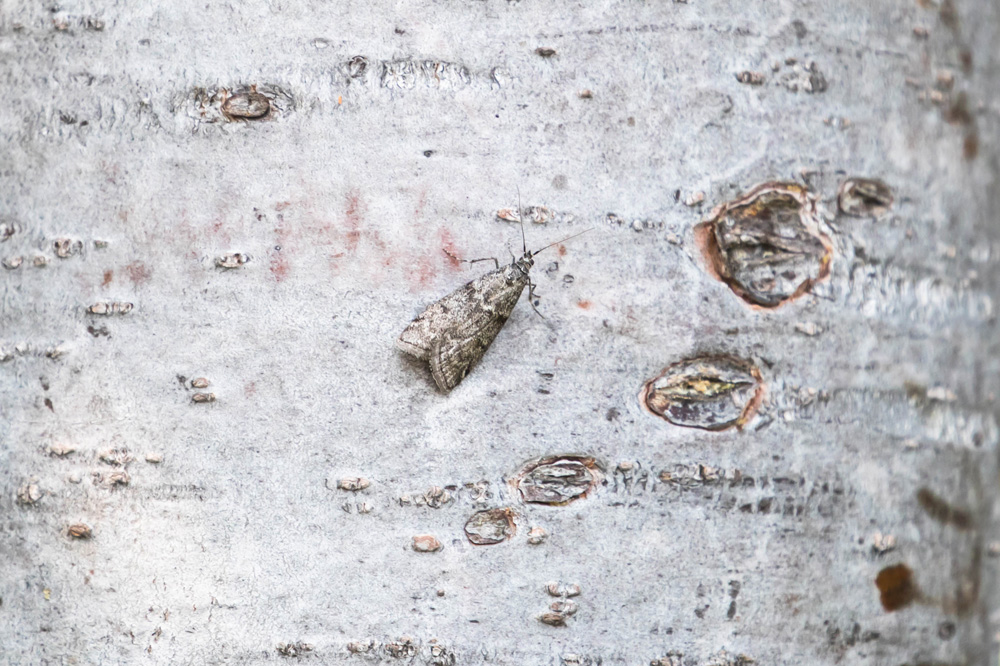
Another returning champion from our previous National Moth Week edition is the toothed brown carpet. This one landed in some leaf litter and disappeared so thoroughly that I had to find it all over again.
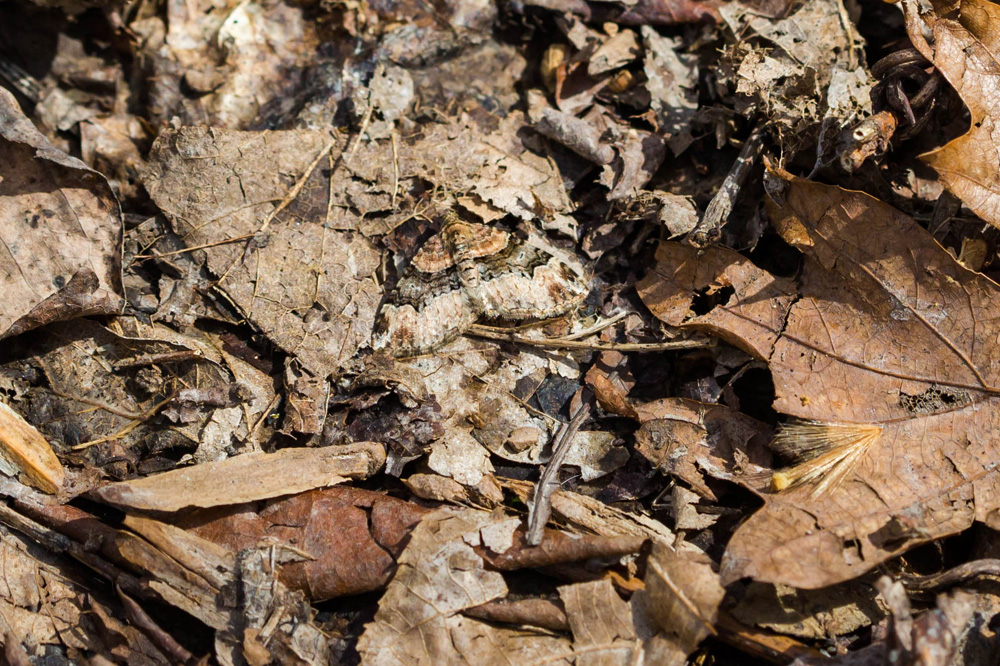
And finally, you’ll have to guess at how well this moth would blend into its intended habitat, where it would look exactly like a small twig sticking up from the ground. It happened to land outside my apartment window one afternoon, giving me ample opportunity to appreciate its fascinating structure in a way I probably never would if I walked by it in the woods. Maybe I have, dozens of times!
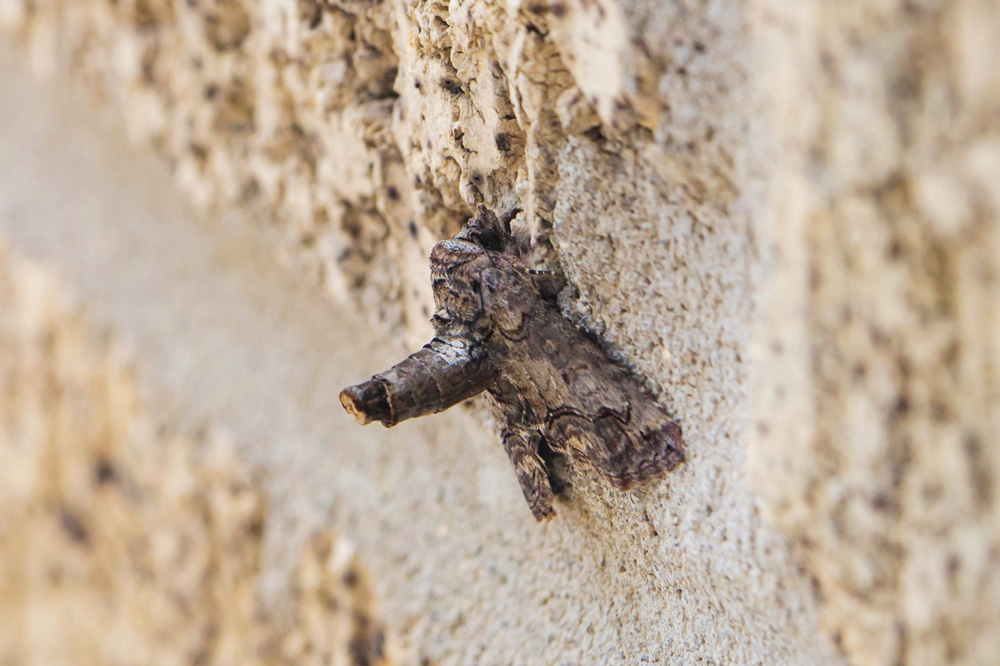
We hope you’ll celebrate this festive occasion by uploading some moth photos to iNaturalist. Here’s a look at the more than 100 species of moths that have been recorded in Overton Park alone!



